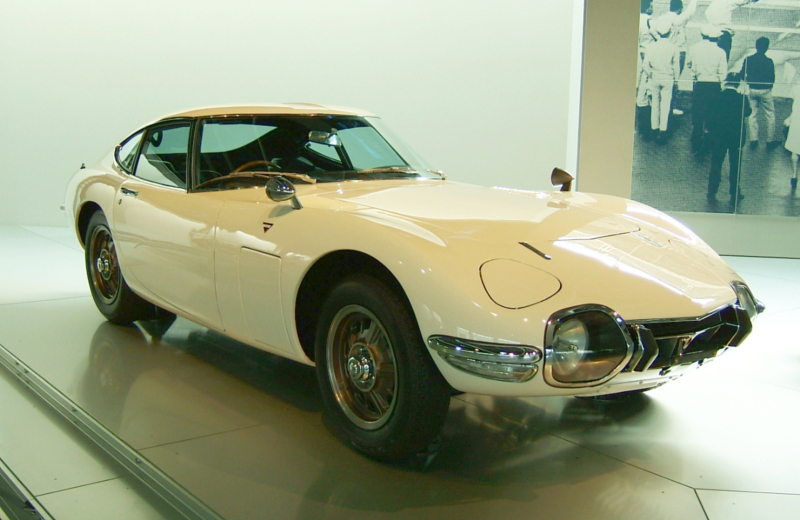The Toyota 2000GT’s rise and sudden fall in the market
The signal that the world was ready to accept the Toyota 2000GT as an A-list collectible came from, of all places, Le Mans, France. At a Christies auction there, on July 8, 2006, a 2000GT sold for $225,998, nearly double what the cars had typically sold for. The market climbed steadily from there. The product of Toyota and Yamaha’s collaboration took a break during the Great Recession, but by 2014, a million dollars could be had for the right 2000GT.
Today, they remain the collector-car million-dollar club’s only Japanese member. Yet, there was some public skepticism when they peaked: “A very small number of owners were in charge of a good percentage of the cars. The big sales were subject to a lot of scrutiny and speculation as to who the buyers and sellers were” according to Hagerty Price Guide publisher Dave Kinney.
For the time being, the days of million dollar 2000GTs seem to be over. In spite of the general hotness of Japanese cars, the air has been coming out of the 2000GT market for the last year or so. An admittedly not fabulous car just hammered at RM in Monterey for under $500,000, a price point not seen for quite some time. What’s happened?
Kinney cites several things: “When the market for a car heats up, usually after the big sale of a phenomenal example, the floodgates open and more cars come to market. Most not of the quality of the earlier sales. Eventually, the blockage created by over-supply has an effect on the market and prices tend to go down.”
“The 2000 GT also trades in a pretty thin market, both literally and figuratively. You actually have to be thin, and rather short to fit in the car. Anyone much over 5’ 8” or 170 lbs. isn’t going to be comfortable. It could be that the pool of well-heeled collectors with the stature of a jockey had all gotten their 2000GTs by sometime in 2014” said Kinney.
Still, Kinney believes that time is on the car’s side. “It’s undeniably a great classic that will probably appeal even more to the next generation of collector, for whom Japanese cars have the exact opposite of a stigma.”
The Toyota 2000GT’s charm is tough to resist. For starters, it’s incredibly low for a street car, just 45.7in tall. Its rooftop wouldn’t extend past the middle of a new Jaguar F-type’s side glass, a car that passes for svelte today.
The rake of the windshield, the rear quarter windows’ exquisite shape and the collection of compound curves that compose each of the 2000GT’s panels are as lovely as anything that came out of Italy in 1967. Even the seemingly Ultraman mask-inspired details like the tail lamps, grille and massive glassed-in front driving lamps have a kitschy-cool 1960s Japanese animé vibe.
Truth be told, the Japanese had a fair amount to be proud of by the mid-1960s. Tokyo hosted a very successful Summer Olympics in 1964. Just barely twenty years after the devastation of the Second World War, Japan was enjoying an economic miracle comparable to the one West Germany was experiencing. So, you can forgive the car’s fussy details if they telegraph a little bit of that exuberance.
The 2000GT famously appeared in a James Bond film, 1967’s You Only Live Twice. Not the usual coupe, but the only factory convertible built. Created for the simple reason that Bond-san, in the form of six-foot two-inch Sean Connery, couldn’t fit into the closed version of the car. Carroll Shelby even prepped a 2000GT for racing in SCCA C-production until Lee Iacocca publicly shamed him for doing it.
Still, respect (and sales) eluded the car. Big budget movie hype aside, 1967 was still a world in which horribly racist Japanese stereotypes and lampoonery were everywhere. Recall Mickey Rooney’s cringeworthy landlord, the myopic Mr. Yunioshi in Breakfast at Tiffany’s. In the pre-240Z days, Japanese cars were still thought of as bad joke punchlines.
A quarter century after the Mitsubishi A6M2 Zero proved that the Japanese could design a fighter plane capable of smoking the best from Supermarine, Hawker, Curtiss and Grumman, the world still couldn’t accept the notion that a Japanese sports car could take on the best from Porsche or Jaguar.
And so the 2000GT flopped miserably. Just 337 were built from 1967 through 1970. Only about 62 of those came to the U.S. where many sat unsold at the original price of $7,150 (for comparison, the Chevy Corvette’s base price in ’67 was $4,240).
But the few people who bought them cherished them – the Yamaha-designed cylinder head was as much a work of art as the gorgeous matching veneers for the dash supplied by Yamaha’s piano division. Few ever fell into a state of hopeless disrepair. Many were retained in the showrooms of early Toyota dealers on the West Coast. Generally, the cars waited for a more enlightened world to accept them – whether at a million dollars or half a million.



